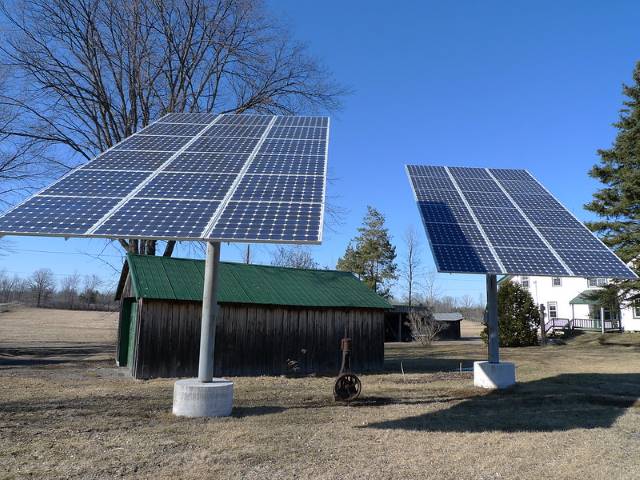Renewable Energy Sources in Vietnam
 On November 25, 2015, the Vietnamese government adopted the Renewable Energy Development Strategy by 2030 with an outlook to 2050, in effect approving renewable energy as a viable and necessary plan. At its core, the strategy shifts Vietnam’s energy policy from focusing on fossil fuels to renewable energy by setting specific goals. After five years, the strategy has resulted in some profound successes: renewable energy sources in Vietnam have gone from non-existent to growingly important.
On November 25, 2015, the Vietnamese government adopted the Renewable Energy Development Strategy by 2030 with an outlook to 2050, in effect approving renewable energy as a viable and necessary plan. At its core, the strategy shifts Vietnam’s energy policy from focusing on fossil fuels to renewable energy by setting specific goals. After five years, the strategy has resulted in some profound successes: renewable energy sources in Vietnam have gone from non-existent to growingly important.
Renewable Energy Sources in Vietnam
The main driver of this shift comes from Vietnamese electricity demand outpacing its supply. Due to Vietnam’s incredible economic growth, its energy needs have grown significantly. For example, in 2020, Vietnamese electricity needs were 7.5% higher than they were in 2019. Overall, its electricity demand has increased by an average of 10% per year for the last five years.
Vietnam’s Plans for Renewable Energy
The 2004 Electricity Law is the prime legislation governing Vietnam’s energy sector. The Electricity Law requires the establishment of national power development master plans for 10-year periods. As the law instructed, the Vietnamese government released its National Power Development Plan for 2011 to 2020 in 2011. One can sum up the plan’s goals as securing Vietnam’s energy needs, improving connectivity in rural areas and increasing the national reliance on renewable sources of energy. The plan estimated that $150 billion in renewable energy investment was necessary to meet Vietnam’s rising energy demand.
The Vietnamese government, in a bid to promote the goals set out in this plan, issued a decision in 2015, approving Vietnam’s renewable energy development strategy up until 2030. In 2016, the government further revised it. The revised version guaranteed that 10% of the Vietnamese energy (excluding hydropower electricity) would come from renewables. The decision reassured the government’s commitment to a reduction of coal-fired energy.
In addition to issuing guarantees, it also laid out some new incentive-based policies to promote investment in the renewable energy sector. For example, it promises:
- Import duty relief on imported materials used for renewable energy projects
- A reduced corporate tax rate for companies working on renewable energy production
- Land use incentives such as reduced or waived fees
Improvements and Progress in the Energy Sector
As a result of these plans and strategies, Vietnam has made significant inroads in increasing wind and solar energy contributions to its overall grid. In 2014, solar, wind and biomass gasification made up only about one-third of 1% of the country’s total installed capacity. Fast forward five years and these renewable energies now make up about 10% of the total energy supply.
In addition to developing solar and wind power, hydropower is already a renewable energy source that constitutes a substantial component of Vietnam’s energy sector. In 2019, it accounted for 46% of the electricity mix.
The government expects to build on this success by announcing the new 10-year National Power Development Plan 2021-2030 which will lay out the next steps and policies to further entrench renewable energy. The government has set renewable energy targets of 15-20% of total energy share by 2030 and 25-30% by 2045.
Even so, expectations have determined that coal will continue to be the dominant source of energy in the country. Although solar and wind power are a growing share of Vietnamese energy production, they have yet to grow faster than energy demand. Additionally, wind and solar energy are dependant on weather conditions and therefore only present intermittent solutions.
The Limitations of Hydropower
Additionally, although hydropower does generate more power than coal, its growth potential is stunted. Hydropower in Vietnam is mostly reliant on the Mekong-Delta, a river that many countries have access to. As a result, it is vulnerable to how other nation-states utilize the river with infrastructure projects that restrict the river’s flow and intensity. Hydropower projects are inherently limited because the government has only so much river access.
Meanwhile, coal presents a cheap and short-term solution to its supply deficit problem. In 2019, coal was 36% of Vietnam’s energy mix and is expected to remain around that proportion for the new National Power Development Plan 2021-2030.
The US as an Invaluable Partner
The United States is proving to be an invaluable partner in Vietnam’s transition to renewable energy as it has provided support, investment and guidance to the Vietnamese government. Specifically, the United States Agency for International Development (USAID) has committed to multiple projects to help Vietnam’s transition. These projects include:
- Low Emission Energy Program (I): Providing support to the government in developing and implementing long-term renewable energy strategies (2015-2021, $16 million)
- Low Emission Energy Program (II): Further support the government in transitioning to renewable energies (2020-2025, $36.25 million)
- Urban Energy Security: Working with Da Nang and Ho Chi Minh cities to improve enabling environments for distributed energy deployment, mobilizing private investment and supporting the government in adopting innovative energy solutions (2019-2023, $14 million).
Renewable Energy Transition Progress
Vietnam still has a long way to go before renewable energy governs most of its energy sector. Still, it has made significant progress toward that goal. Renewable energy sources in Vietnam are growingly significant in energy policies and are a sustainable answer to electricity needs in developing countries.
– Vincenzo Caporale
Photo: Flickr
